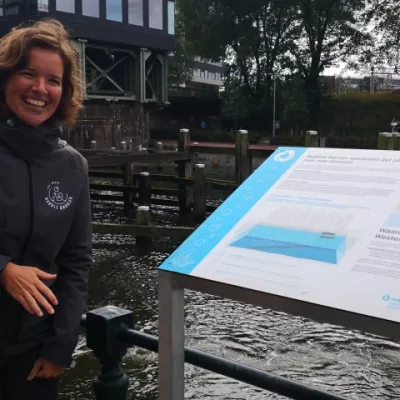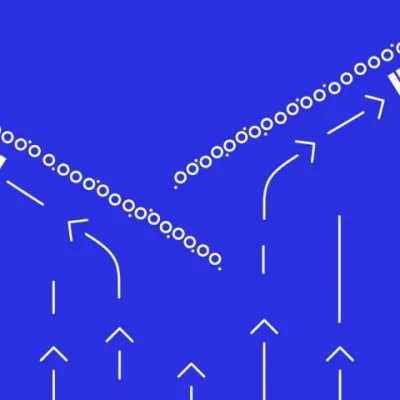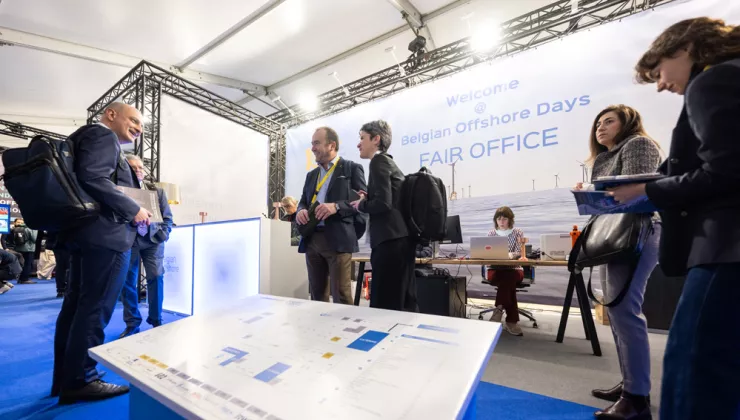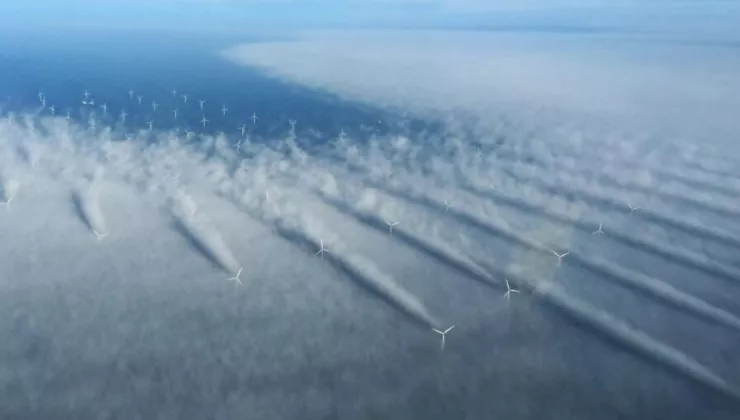Less waste in rivers thanks to bubbles
Tackling this problem requires a two-fold approach. On the one hand, we need to ensure less plastic ends up in the water, for instance, by raising consumers’ awareness or by implementing solutions at the source. On the other hand, we need to develop innovative ways to efficiently remove the plastic. An example of the latter is the Great Bubble Barrier.
On 13 September, a group of stakeholders linked to the innovation project PLUXIN visited the Great Bubble Barrier in Amsterdam. There, they were met by Anne Marieke Eveleens and Philip Ehrhorn - the founders of the Great Bubble Barrier - and collaborator Marin van Wetering.
Following the visit and a delicious lunch with views of the Great Bubble Barrier, Marin van Wetering gave a presentation on the history, future developments, plans and technical details of the installation. Afterwards, the attendees had the opportunity to ask questions.
History
The first operational Great Bubble Barrier was installed in November 2019 in one of the locations where water flows from Amsterdam’s canals into the river IJ. The Bubble Barrier was commissioned by Water Authority Amstel, Gooi & Vecht and the City of Amsterdam as part of the “Amsterdam Clean Water” programme, which aims to achieve clean, plastic-free water in Amsterdam.
How does the Great Bubble Barrier work?
Air is pumped through a perforated tube at the bottom of the waterway, creating bubbles. Those bubbles form a shield that blocks plastic throughout the water column and moves it to the surface. The diagonal placement of the Bubble Barrier in the waterway then guides plastic towards the side and into the collection system.
This collection system is emptied up to three times a week and catches objects up to one meter long, from ballpoint pens to Christmas trees and surfboards. In addition to catching plastic, the Bubble Barrier also raises awareness among passers-by, both on and off the water.
About Pluxin
Every year, a lot of plastic waste flows from our rivers to the sea, eventually ending up on the beach or on the seabed. Within the PLUXIN project, we aim to better understand how plastic moves horizontally and vertically in the water, and look for hotspots of pollution.
PLUXIN would like to thank the Great Bubble Barrier for the warm welcome and sharing their ideas, as well as Vincent van Dyck from the Port of Antwerp for organising this meeting.









